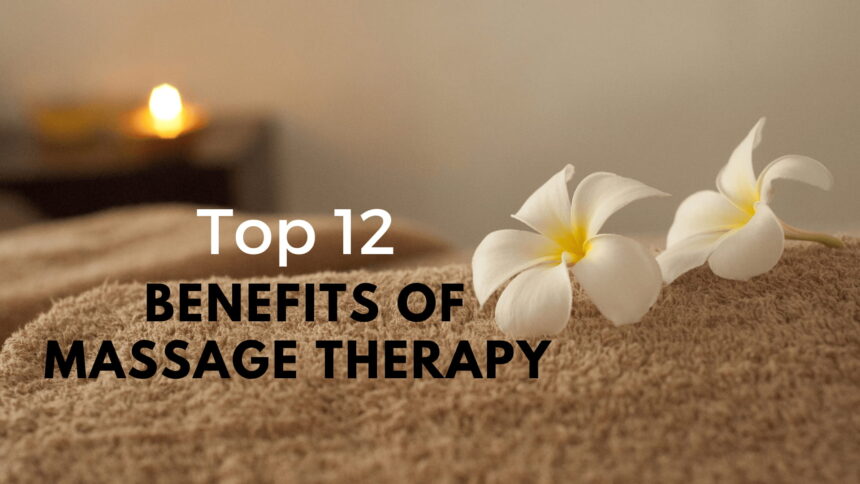Massage therapy provides numerous advantages that go beyond just promoting relaxation. For those seeking massage therapy in Orlando, understanding these benefits can enhance one’s appreciation of this holistic practice.
Massage therapy provides advantages for both physical and mental well-being. Physically, it relieves muscle tension, alleviates pain, improves posture, and enhances recovery, making it ideal for athletes. It also boosts circulation, aiding in nutrient delivery and waste removal. Mentally, massage promotes endorphin release, reducing stress, anxiety, and depression while fostering relaxation and mental clarity. Additionally, it increases flexibility, prevents injuries, and improves performance, especially for those with sedentary or repetitive jobs. Overall, massage therapy is a vital part of a comprehensive wellness routine.
Types of Massage Therapy
Massage therapy is not one-size-fits-all. Different techniques cater to different needs, making it essential to choose the right type of massage for your specific requirements. Whether it’s relief from chronic pain or simply relaxation, there’s a massage technique suited for everyone.
- Swedish Massage: Swedish massage is likely the most famous. Long, gentle strokes are utilized to reduce muscle tension and stress. Generally intended for relaxation, Swedish massage employs techniques like effleurage and petrissage to ease the body into a state of tranquility.
- Deep Tissue Massage: Deep tissue massage targets the deeper muscle layers and surrounding tissues of the body. This method is especially advantageous for long-lasting pain and tightness, targeting particular trouble spots to eliminate adhesions and enhance muscle performance.
- Sports Massage: Sports massage focuses on muscle groups used in athletic activities and is beneficial for enhancing performance and preventing injuries. These massages are customized for the athlete’s particular sport, focusing on the body areas that are most engaged in their activities.
- Aromatherapy Massage: Aromatherapy massage incorporates essential oils into the therapy session, offering both physical and emotional benefits. Different oils are chosen for their unique properties, such as lavender for relaxation or eucalyptus for muscle relief.
- Hot Stone Massage: Heated stones are utilized in hot stone massage to amplify the soothing benefits of the treatment. The heat emitted by the stones aids in better muscle relaxation, providing a particularly soothing experience for both the body and mind.
Massage Therapy Techniques and Their Uses
Understanding different massage techniques can help you get the most out of your sessions. Each technique has specialized applications that cater to various needs, from muscle relaxation to pain relief.
- Effleurage: Effleurage involves long, sweeping strokes. It’s typically used at the beginning of a session to warm up the muscles. This technique helps to prepare the body for deeper manipulation and enhances overall relaxation.
- Petrissage: Petrissage involves kneading and squeezing muscles to break down knots and increase circulation. It is beneficial for targeting deeper muscle layers and is often employed in sports and deep tissue massages.
- Friction: Friction techniques use deep, circular movements to realign tissue fibers and break down adhesions. This approach is beneficial for treating areas with scar tissue or chronic tension.
- Tapotement: Tapotement involves rhythmic tapping, usually with the edges of the hands, to stimulate nerve endings and improve muscle tone. This technique is often used in sports massages to invigorate the muscles and enhance performance.
Choosing the Right Type of Massage for You
Selecting the appropriate type of massage depends on understanding your specific needs. An in-depth evaluation will assist in determining the most suitable treatment for your specific situation.
- Assessing Your Needs: Assess your body’s requirements. For instance, do you need relaxation, or are you looking for pain relief? Determining your objectives will help lead you in selecting the appropriate therapy. Self-assessment questionnaires and initial consultations can be beneficial if you need clarification.
- Consultation with a Therapist: Consult a licensed massage therapist for professional guidance. They can recommend the proper techniques based on your health conditions and wellness objectives. Detailed discussions about your medical history and current symptoms will enable them to formulate a tailored massage strategy.
The Role of Massage Therapy in Holistic Health
Massage therapy plays a crucial role in holistic health, harmoniously fitting in with other wellness routines. It serves as a bridge between physical and mental well-being, making it indispensable for a balanced lifestyle.
- Stress Reduction: Massage plays a significant role in promoting mental and emotional well-being by helping to reduce stress. Persistent stress may result in a range of health problems, such as heart disease and depression, underscoring the importance of managing stress effectively.
- Integrating with Other Therapies: Massage therapy can be combined with other treatments like acupuncture or chiropractic care for a comprehensive approach to health. Integrative therapies offer a more rounded approach, addressing multiple aspects of health simultaneously.
Frequency of Massage Therapy Sessions
How often you should get a massage depends on your lifestyle and specific health conditions. Establishing a routine can amplify the benefits of massage therapy.
- Establishing a Routine: For general well-being, a monthly massage may suffice. However, for specific health issues like chronic pain or severe stress, more frequent sessions may be required. Your massage therapist can assist you in creating a schedule that supports your health objectives.
- Customized Plans: A customized massage plan can be developed with your therapist to meet your unique needs and wellness goals. These plans can be adjusted over time to better cope with changing health conditions and therapy responses.






